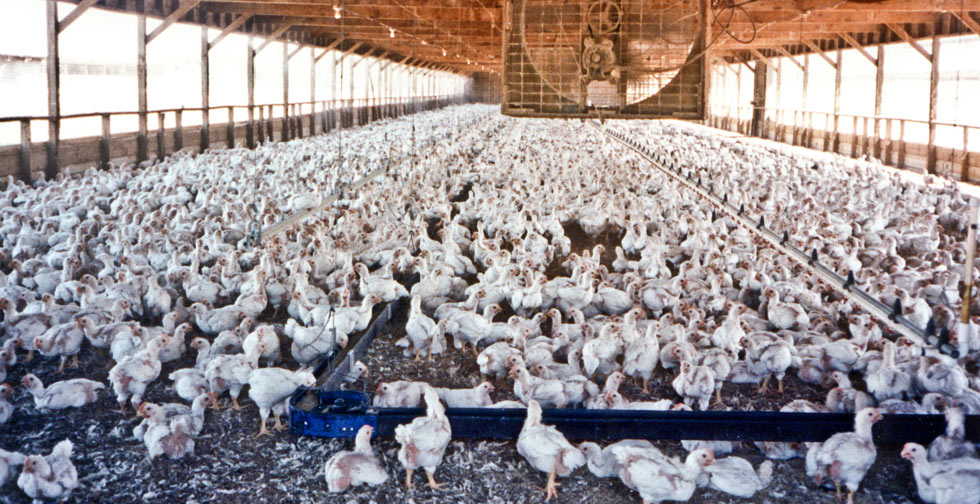
In Maryland, the agriculture sector is the largest source of polluted runoff into the Chesapeake Bay. And the poultry industry is the most active and the largest component of this.
Much of the poultry pollution comes from CAFOs - "Concentrated Animal Feeding Operations". The poultry litter produced by the CAFOs on the Eastern Shore is applied to fields in loads far larger than what the crops and soil can effectively use and absorb. While some policies have been put in place to mitigate this impact, the number of chickens in Maryland CAFOs continues to grow. Since November 2015, there have been 24 proposals for 120 new houses (600-foot structures that hold up to 35,000 birds each) in the Delmarva region.
CAFOs also emit nitrogen and ammonia, which cause adverse health consequences such as asthma, bronchitis, and other respiratory illnesses, impacting not only the Bay, but the health of adjacent communities. The Baltimore Sun recently reported that Somerset County commisioners just approved a new rule that doubles the minimum space between chicken houses and residences from 200 feet to 400 feet due to complaints from local community members.
This fall Sierra Club will be working with Assateague Coastal Trust, Waterkeepers Chesapeake, Rachel Carson Council, and many others to host the CAFO Road Show, an education tour exploring the environmental and health risks associated with the growth of CAFOs on Maryland's Eastern Shore.
Join the Sierra Club's Clean Water Team to help this effort.
Get Active in Your Local Community
Wicomico County
Concerned Citizens Against Industrial CAFOs is active in the fight to keep CAFOs farther from residential areas. A vote on new regulations is scheduled for the County Council's meeting on Sept. 6th.
Delmarva Coast
Assateague Coastal Trust has information about current water quality (is it safe to swim?) at local beaches. They recently co-hosted a Town Hall meeting in Salisbury MD to discuss the unprecedented expansion of industrial scale poultry houses in the community.
Chesapeake and Coastal Bays
Waterkeepers Chesapeake is working to reduce agricultural pollution in the waterways of the Chesapeake Bay and coastal watersheds. They have been pushing for greater transparency and accountability for the agricultural industry.